The views expressed in our content reflect individual perspectives and do not represent the official views of the Baha'i Faith.
From the exalted source, and out of the essence of His favor and bounty He hath entrusted every created thing with a sign of His knowledge, so that none of His creatures may be deprived of its share in expressing, each according to its capacity and rank, this knowledge. This sign is the mirror of His beauty in the world of creation. – Baha’u’llah, Gleanings from the Writings of Baha’u’llah, p. 262.
The British writer John Keats, known today as one of the greatest poets who ever lived, only wrote for six years. He died at 25, a victim of tuberculosis, poverty and a heart broken by the lack of public acceptance of his work. He had published, in four short years, only three volumes of poetry, and sold maybe 200 copies total.
Keats wrote odes, short poems filled with sensual detail, exquisite observation of the natural world and a powerful intensity of feeling. Some of that intensity no doubt came from his chaste but passionately emotional love for Fanny Brawne. The two met when Keats was a young man of 23 and Brawne was 18, and John wrote his famous poem “Bright Star” for Fanny. (In 2009 the director Jane Campion made a tender, beautiful film about their relationship called Bright Star.)
In a letter to Fanny, John wrote:
I cannot exist without you – I am forgetful of every thing but seeing you again – my Life seems to stop there – I see no further. You have absorb’d me. I have a sensation at the present moment as though I was dissolving – I should be exquisitely miserable without the hope of soon seeing you … I have been astonished that Men could die Martyrs for religion – I have shudder’d at it – I shudder no more – I could be martyr’d for my Religion – Love is my religion – I could die for that – I could die for you.
The burning love that John Keats had for Fanny Brawne found its expression in hundreds of these notes and letters, written in an intense stream of consciousness style that would find its way into modern writing in the ensuing centuries. It would also endear him to millions of admirers around the world, many of whom believe that John Keats’ poetry has never been surpassed in the English language. Along with Rumi and Shakespeare, Keats is now thought of as one of the greatest poets who ever lived.
Keats, dying from his illness in Rome, wrote to his beloved Fanny Brawne in February, 1820:
I have left no immortal work behind me – nothing to make my friends proud of my memory – but I have lov’d the principle of beauty in all things, and if I had had time I would have made myself remember’d.
This young, humble poet died later that year, leaving behind his poems and letters and his great love. He bequeathed us at least one poem that every English speaker reads in school, called Ode On a Grecian Urn. The last half of the final stanza has these immortal lines:
When old age shall this generation waste,
Thou shalt remain, in midst of other woe
Than ours, a friend to man, to whom thou sayst,
“Beauty is truth, truth beauty,” – that is all
Ye know on earth, and all ye need to know.
Keats compares the immortal art of the urn to the truth. He says that art, which affects us through its lasting beauty, is one of the highest forms of truth. But he says something else, as well – that truth itself is beautiful.
In the Baha’i teachings, beauty and truth are one, just as they were for Keats. Two of Baha’u’llah’s evocative, poetic titles – the Blessed Beauty and the Ancient Beauty – reflect that principle. Spiritual beauty, rather than mere ephemeral physical beauty, represents truth; and to Baha’is truth is one. The Baha’i writings compare purity of soul to both beauty and truth:
When man in all conditions is pure and immaculate, he will become the center of the reflection of the manifest Light. In all his actions and conduct there must first be purity, then beauty and independence. The channel must be cleansed before it is filled with sweet water. The pure eye comprehendeth the sight and the meeting of God; the pure nostril inhaleth the perfumes of the rose-garden of bounty; the pure heart becometh the mirror of the beauty of truth. – Abdu’l-Baha, Baha’i World Faith, p. 333.
“The vale of soul-making,” Keats called this physical world. He believed in overcoming self through the soul’s innate love for lasting beauty; and his poetry centered on the idea of the beauty of creation as a visible sign of the mystery and unreachable beauty of the Creator. Much as the Sufi poets did, Keats exalted beauty as truth, and called on the mystical feelings deep inside every human being to respond. For Keats and for the Baha’is the beauty of the oneness of truth surpasses all.


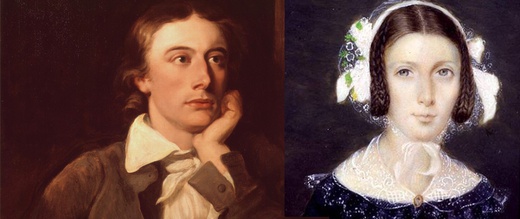

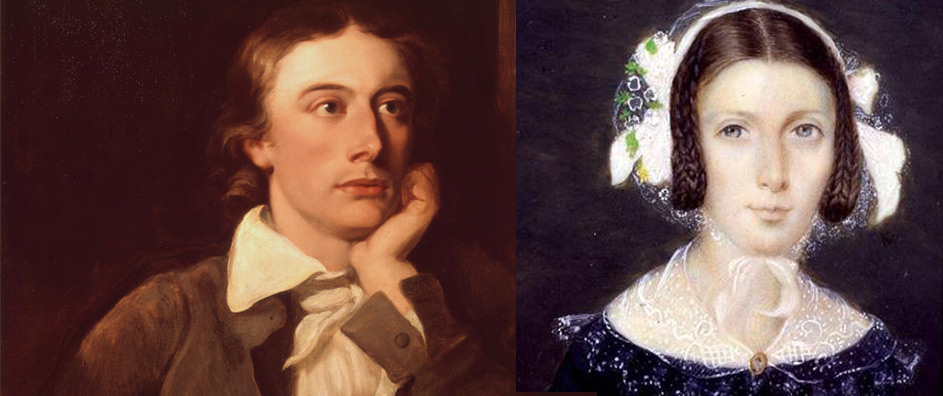
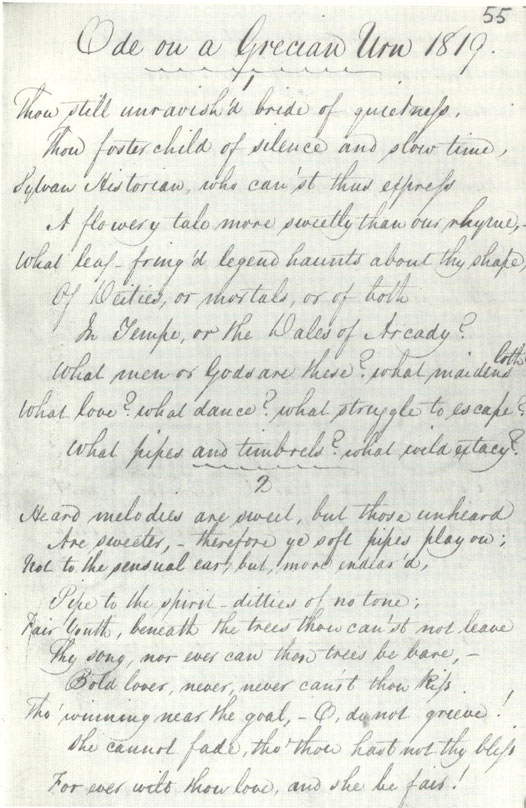




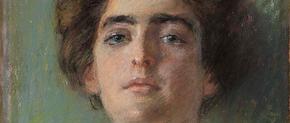
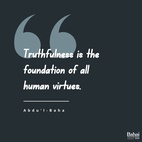
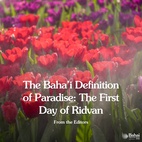

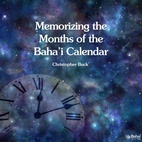
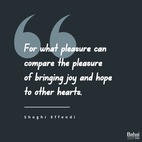

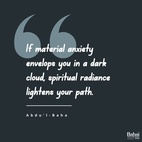
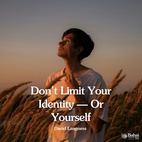

Comments
Sign in or create an account
Continue with Facebookor